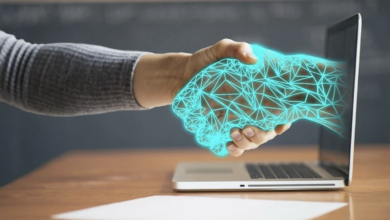Revolutionizing the Art World: Exploring the Impact of AI Art Generators

In recent years, the art world has witnessed a groundbreaking revolution with the emergence of AI art generators. These innovative tools have not only reshaped the way art is created but also challenged conventional notions of creativity and artistic expression. AI art generators are computer programs that utilize artificial intelligence algorithms to autonomously generate original artworks. By combining deep learning techniques, neural networks, and vast amounts of data, these generators can produce stunning pieces of art that rival those created by human artists.
How AI Art Generators Work
AI art generators operate by analyzing vast databases of existing artwork and learning the patterns, styles, and techniques used by renowned artists. These algorithms can then mimic these styles and generate original artworks based on the learned patterns. The process involves inputting specific parameters or criteria into the generator, such as the desired style, color palette, or subject matter. The AI algorithm then processes these inputs and creates a unique piece of art, often indistinguishable from works created by human hands.
The technology behind art generators is based on deep learning, a subset of machine learning that enables computers to learn from vast amounts of data and improve their performance over time. This allows the generators to continuously refine their artistic skills and produce increasingly sophisticated and realistic artworks. The algorithms are trained on large datasets that include paintings, photographs, and other visual materials, allowing them to learn the intricacies of various artistic styles and create artwork that adheres to those styles.
The Impact of AI Art Generators on the Art World
The introduction of AI art generators has had a profound impact on the art world, challenging traditional notions of artistic creation and raising questions about the role of technology in the creative process. These generators have democratized art production, allowing individuals without formal artistic training to create compelling and visually striking artworks. This has opened up new opportunities for aspiring artists and has diversified the artistic landscape by bringing in fresh perspectives and innovative styles.
Moreover, AI art generators have sparked intriguing conversations about the nature of creativity and the role of human artists in the artistic process. While some argue that AI-generated art lacks the emotional depth and unique perspective that human artists bring, others see it as a new form of collaboration between human creativity and machine intelligence. Art generators prompt us to reconsider the boundaries of artistic expression and question the notion of authorship in art.
The Benefits of Using AI Art Generators
AI art generators offer numerous benefits to both artists and art enthusiasts. For artists, these tools provide a platform for experimentation and exploration of new styles and techniques. They can serve as a source of inspiration, enabling artists to break free from creative blocks and discover fresh ideas. Additionally, art generators can help artists streamline their workflow by automating certain aspects of the artistic process, such as generating initial sketches or creating backgrounds.
Art enthusiasts also benefit from AI art generators as they gain access to a wider range of artistic styles and genres. These tools enable individuals to explore different aesthetics and discover artworks that resonate with their personal preferences. AI-generated art can challenge traditional artistic norms and push the boundaries of creativity, offering viewers a unique and thought-provoking experience. Furthermore, the availability of AI-generated art can contribute to the preservation and accessibility of artistic heritage by creating digital reproductions and adaptations of iconic artworks.
Examples of Famous AI-Generated Artworks
AI art generators have already produced several remarkable artworks that have gained recognition in the art world. One notable example is “Portrait of Edmond de Belamy,” an AI-generated painting that was sold at auction for a staggering $432,500 in 2018. Created by the art collective Obvious using a generative adversarial network (GAN), the artwork sparked debate and controversy within the art community. It raised questions about the value of AI-generated art and its place in the art market.
Another famous AI-generated artwork is “The Next Rembrandt,” a project that aimed to create a new painting in the style of the renowned Dutch master. By analyzing the patterns and techniques used by Rembrandt in his existing works, a team of data scientists, engineers, and art historians developed an algorithm that generated a painting resembling Rembrandt’s style. The result was a stunning portrait that captured the essence of Rembrandt’s artistic vision.
These examples demonstrate the potential of AI art generators to produce visually captivating and artistically compelling artworks that challenge our perceptions of creativity and artistry.
Challenges and Criticisms of AI Art Generators
Despite the numerous benefits and exciting possibilities offered by AI art generators, they also face challenges and criticisms. One of the main concerns is the potential loss of human creativity and craftsmanship in the artistic process. Critics argue that AI-generated art lacks the emotional depth, intentionality, and subjective experience that human artists bring to their creations. They fear that the proliferation of AI-generated art may devalue the role of human artists and undermine the uniqueness of their artistic expression.
Another criticism revolves around the issue of originality and authenticity. Since AI art generators learn from existing artworks, there are concerns about the potential infringement of copyright and intellectual property rights. Some argue that AI-generated art is merely a replication of existing styles and lacks true originality. Furthermore, the question of authorship arises, as AI art generators blur the lines between human creativity and machine intelligence, making it challenging to attribute artistic ownership.
Ethical Considerations Surrounding AI Art Generators
The rise of AI art generators also raises important ethical considerations that need to be addressed. One such concern is the potential for bias and discrimination in the generated artworks. If the datasets used to train the AI algorithms are biased or limited in diversity, it can result in artworks that perpetuate stereotypes or exclude certain groups. It is crucial to ensure that the training datasets are diverse and representative, reflecting a wide range of artistic styles, cultures, and perspectives.
Additionally, questions arise regarding the responsibility and accountability for AI-generated artworks. Who should be held liable if an AI-generated artwork infringes copyright or causes harm? Should it be the developer of the AI algorithm, the user of the generator, or the AI system itself? These questions highlight the need for clear ethical guidelines and legal frameworks to govern the use and implications of AI art generators.
How AI Art Generators are Changing the Art Market
The introduction of AI art generators has disrupted the traditional art market and challenged established business models. These tools have the potential to democratize the art market by providing opportunities for emerging artists to gain recognition and exposure without the need for traditional art galleries or agents. AI-generated art can be easily shared and showcased online, reaching a global audience and bypassing the gatekeepers of the art world.
Furthermore, AI art generators have the potential to create new revenue streams for artists. By generating digital reproductions or limited editions of their AI-generated artworks, artists can sell them to art collectors and enthusiasts. These digital artworks can be easily distributed, offering a more accessible and affordable option for art lovers who may not have the means to purchase original physical artworks.
However, the rise of AI-generated art also raises concerns about the authenticity and value of artworks. The art market relies heavily on the notion of rarity and uniqueness, which may be compromised by the ability to create unlimited digital reproductions of AI-generated artworks. As the art market adapts to these new challenges, it is essential to develop mechanisms to ensure the integrity and value of AI-generated artworks and protect the interests of artists and collectors.
The Future of AI Art Generators
AI art generators hold immense potential for the future of the art world. As technology continues to advance, these tools are likely to become even more sophisticated, capable of creating artworks that are virtually indistinguishable from those created by human artists. This raises exciting possibilities for collaborations between AI systems and human artists, where the boundaries between human creativity and machine intelligence are blurred.
Additionally, AI art generators have the potential to revolutionize art education and artistic training. These tools can serve as valuable resources for aspiring artists to learn different artistic styles, techniques, and aesthetics. They can provide a platform for experimentation and exploration, allowing artists to push their creative boundaries and discover new artistic directions.
However, as art generators become more prevalent, it is crucial to address the ethical and societal implications they raise. Artistic and creative fields must navigate the intersection of technology and human expression, ensuring that generated art respects diversity, inclusivity, and ethical guidelines.
Conclusion
The emergence of art generators has brought about a paradigm shift in the art world. These innovative tools have challenged traditional notions of artistic creation, raising profound questions about creativity, authorship, and the role of technology in the artistic process. While AI-generated art has faced criticism and ethical concerns, it also offers exciting possibilities for artists, art enthusiasts, and the art market as a whole. As the journey of art generators continues, it is essential to strike a balance between the capabilities of technology and the human essence of art, creating a future that embraces both innovation and creativity.



